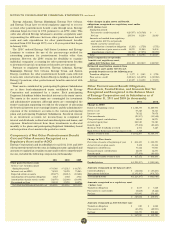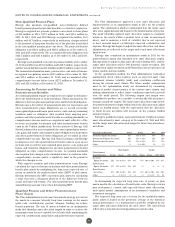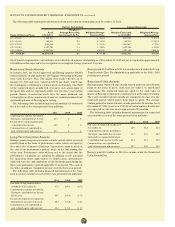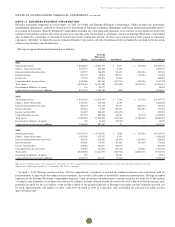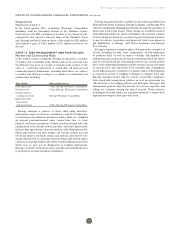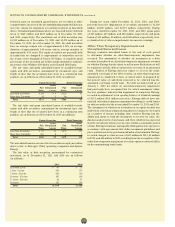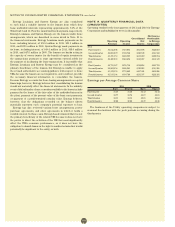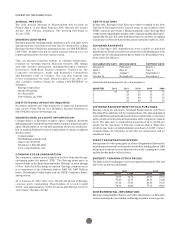Entergy 2011 Annual Report Download - page 105
Download and view the complete annual report
Please find page 105 of the 2011 Entergy annual report below. You can navigate through the pages in the report by either clicking on the pages listed below, or by using the keyword search tool below to find specific information within the annual report.
Entergy Corporation and Subsidiaries 2011
NOTES TO CONSOLIDATED FINANCIAL STATEMENTS continued
Dispositions
HARRI SO N CO U NT Y
In the fourth quarter 2010, an Entergy Wholesale Commodities
subsidiary sold its ownership interest in the Harrison County
Power Project 550 MW combined-cycle plant to two Texas electric
cooperatives that owned a minority share of the Marshall, Texas
unit. Entergy sold its 61 percent share of the plant for $219 million
and realized a gain of $44.2 million ($27.2 million net-of-tax) on
the sale.
NOTE 16. RISK MANAGEMENT AND FAIR VALUES
Market and Commodity Risks
In the normal course of business, Entergy is exposed to a number
of market and commodity risks. Market risk is the potential loss
that Entergy may incur as a result of changes in the market or fair
value of a particular instrument or commodity. All financial and
commodity-related instruments, including derivatives, are subject
to market risk. Entergy is subject to a number of commodity and
market risks, including:
Type of Risk Affected Businesses
Power price risk Utility, Entergy Wholesale Commodities
Fuel price risk Utility, Entergy Wholesale Commodities
Foreign currency
exchange rate risk Entergy Wholesale Commodities
Equity price and
interest rate
risk-investments Utility, Entergy Wholesale Commodities
Entergy manages a portion of these risks using derivative
instruments, some of which are classified as cash flow hedges due
to their financial settlement provisions while others are classified
as normal purchase/normal sales transactions due to their
physical settlement provisions. Normal purchase/normal sale risk
management tools include power purchase and sales agreements,
fuel purchase agreements, capacity contracts, and tolling agreements.
Financially-settled cash flow hedges can include natural gas and
electricity futures, forwards, swaps, and options; and interest rate
swaps. Entergy will occasionally enter into financially settled option
contracts to manage market risk under certain hedging transactions
which may or may not be designated as hedging instruments.
Entergy enters into derivatives only to manage natural risks inherent
in its physical or financial assets or liabilities.
Entergy manages fuel price volatility for its Louisiana jurisdictions
(Entergy Gulf States Louisiana, Entergy Louisiana, and Entergy New
Orleans) and Entergy Mississippi primarily through the purchase of
short-term natural gas swaps. These swaps are marked-to-market
with offsetting regulatory assets or liabilities. The notional volumes
of these swaps are based on a portion of projected annual exposure
to gas for electric generation and projected winter purchases for
gas distribution at Entergy Gulf States Louisiana and Entergy
New Orleans.
Entergy’s exposure to market risk is determined by a number of
factors, including the size, term, composition, and diversification
of positions held, as well as market volatility and liquidity. For
instruments such as options, the time period during which the option
may be exercised and the relationship between the current market
price of the underlying instrument and the option’s contractual strike
or exercise price also affects the level of market risk. A significant
factor influencing the overall level of market risk to which Entergy
is exposed is its use of hedging techniques to mitigate such risk.
Entergy manages market risk by actively monitoring compliance
with stated risk management policies as well as monitoring the
effectiveness of its hedging policies and strategies. Entergy’s risk
management policies limit the amount of total net exposure and
rolling net exposure during the stated periods. These policies,
including related risk limits, are regularly assessed to ensure their
appropriateness given Entergy’s objectives.
103



